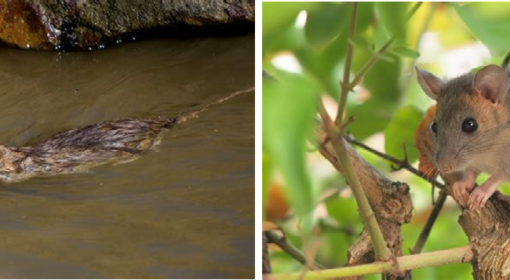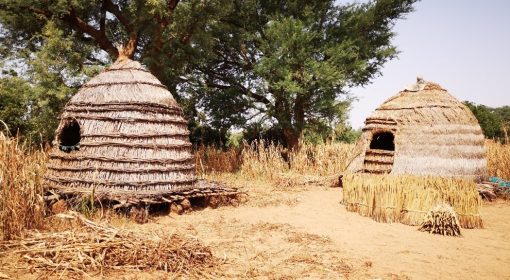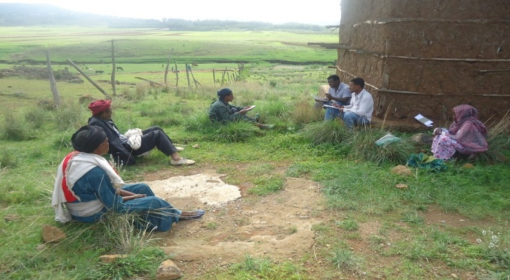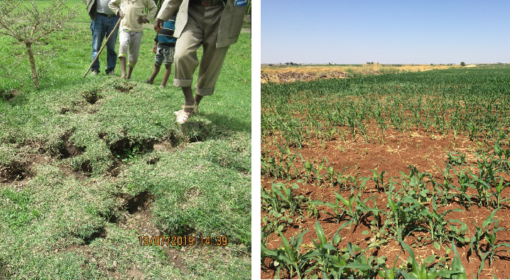Authors: Luwieke Bosma, Ibrahima Sow, Yonas Meheretu and Ambroise Dalecky
In the Senegal River Valley, as well as in other irrigated rice farming systems, rodent infestations pose a significant threat to rice production, a staple food, vital for food and nutrition security in Senegal. Rodents not only cause extensive crop damage but also pose risks to human infrastructures and public health. These pests are responsible for billions of US dollars in damages annually, affecting food stocks that sustain millions of people worldwide and contributing to the spread of zoonotic diseases.
Rodent outbreaks can lead to agricultural losses of up to 100%, both in the field and during post-harvest stages, with global crop damages estimated at 5-25% for major cereal and horticultural crops. Unfortunately, rodent management is often overlooked in development policies, leaving vulnerable communities susceptible to these pests. In Sub-Saharan Africa, field losses due to rodents can reach 16%, while storage losses can be as high as 8%.1
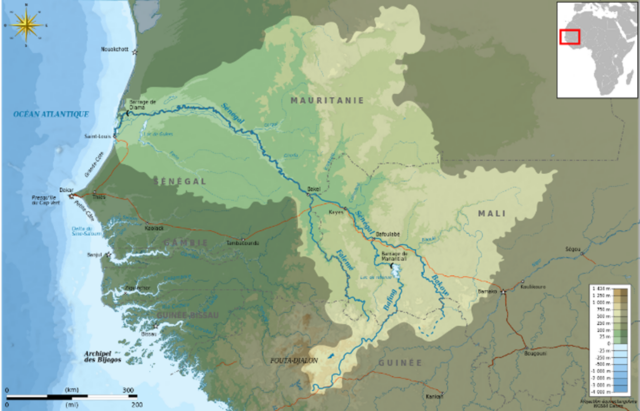
West Africa, including Senegal, has experienced recurrent rodent infestations, causing significant yield losses and leading farmers to abandon their fields. Factors such as agricultural intensification and climatic variability, particularly in the Sahelian climate, contribute to the proliferation of rodent populations. The expansion of irrigated rice production areas has further exacerbated this issue. This combined with the population dynamics of rodents that shoot up in years of high rainfall, is likely to increase the risk of rodent outbreaks with major consequences for crop losses. Results from Niang et al. 2022, suggest that uncultivated areas and vegetable gardening fields constitute refuge and breeding ground hotspots and would thus form a starting point for the invasion of rice fields.
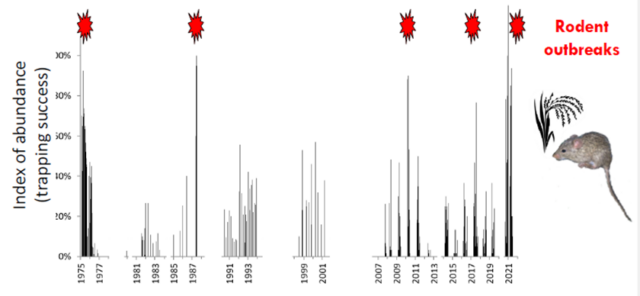
As an example, an outbreak of rodents was observed in 2020 in Senegal and Mauritania on both banks of the River Senegal, following a particularly humid rainy season. Between 14% and 37% of the area sown with rice were affected depending on the region, out of a total of 111,643 ha. This resulted in estimated total losses of ca. 84,000 tons of paddy rice, i.e. 6% to 35% of the total expected production according to region, which represents a total loss of production of more than 31.4 million USD, directly affecting nearly 40,000 households, or about 270,000 people (11% to 14% of the population of these regions)2. More periods of high rodent densities are likely to occur as crop area, rice production and water availability increase.3
Current rodent control methods predominantly rely on chemical poisons, which pose environmental and health risks and have limited effectiveness in reducing rodent populations. The overuse of synthetic rodenticides underscores the need for sustainable and environmentally friendly alternatives, such as Ecologically-Based Rodent Management (EBRM)4. Although successful implementations have been observed in other regions, EBRM approaches remain underutilized in West Africa.

Over the past three years, significant progress has been made in rodent prevention and control practices, encompassing various initiatives from population monitoring to practical awareness campaigns and the promotion of good practices among farmers. This collective effort has culminated in the establishment of an Integrated Rodent Management Framework (IRMF), overseen by the Senegalese Ministry of Agriculture, Rural Equipment, and Food Sovereignty (Ministère de l’Agriculture, de l’Equipement Rural et de la Souveraineté Alimentaire MAERSA). These initiatives aim to promote community-based strategies for mitigating rodent populations.

Moving forward, a strategic plan has been developed to evaluate rodenticide usage, promote good practices for rodent control, implement integrated management strategies for crop pests, and establish a regional monitoring system. This plan involves collaboration among various stakeholders, including governmental agencies, research institutions, and local communities, to enhance EBRM methods and effectively manage rodent populations in West Africa. By building on existing efforts and engaging with local communities, these initiatives aim to safeguard agricultural productivity and public health in the region.
Moreover, efforts have been made to adapt and disseminate essential resources. The EBRM field application manual, originally developed for Ethiopian farming systems, has been translated into French and tailored to the West African context. Additionally, translations into Arabic, Soninke, Pulaar (Fufulde) and Wolof are in progress.
Our recent endeavors have included a comprehensive study conducted in the delta of the River Senegal. This involved a Knowledge, Attitude, and Practice (KAP) survey among farmers across 18 villages, alongside a joint experiment with farmers and scientists in rice fields. The experiment, conducted during the hot-dry growing season from March to July 2023, aimed to assess the efficacy of two EBRM methods: mechanical rodent control and the Linear-Trap Barrier System (L-TBS).5
Utilizing the capture-mark-recapture (CMR) method, we evaluated rodent composition and density, while closely monitoring crop yield and damage across experimental and control plots. This meticulous approach, implemented over 5 treatments in a pilot rice-growing area, included two control treatments, a linear barrier system with multiple-capture traps (L-TBS) and a mechanical control system combining both burrow flooding and rodent beating using fishing nets (with a single operation at the start of the production season on one treatment and every month on the other). A total of 256 rice samples were monitored in the 30 fields of the system. Sample selection and evaluation of cut stems were carried out randomly in 200-square-meter plots, which are installed in the different fields of the system, so as to have two plots per field, one facing the treatment and the other 20 meters away from it, enabled us to gauge the effectiveness and local suitability of the tested EBRM methods.


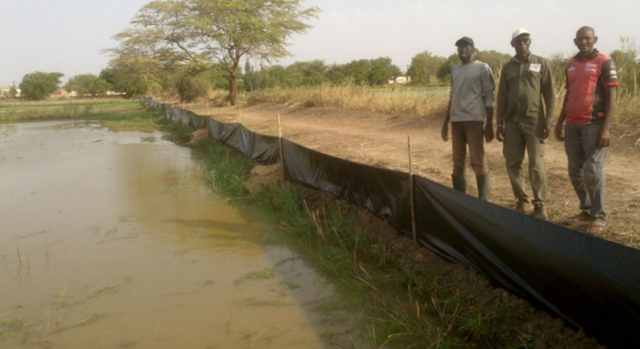
These efforts mark significant progress towards our overarching goal of refining rodent management practices, ensuring they are not only effective but also tailored to the needs and contexts of local farmers.
In conclusion, our focus is on employing EBRM as a versatile toolkit, designing methods that are both effective and sustainable for adoption by farmers. A training for a diverse group of professionals and practitioners alike is organized in April 2024 as part of the Orange Knowledge Programme. In the training we emphasize both theoretical background and comprehension of rodent ecology and methods, as well as building skills to implement practical and environmentally friendly management together with other actors and communities.
For more information contact Luwieke Bosma (Lbosma@metameta.nl)
* The Orange Knowledge Programme, funded by the Dutch Ministry of Foreign Affairs, is a Dutch global development programme available in 53 developing countries and managed by Nuffic, a Dutch non-profit organisation for internationalization in education.
References:
[1] Meerburg BG, Singleton GR, Leirs H. The Year of the Rat ends – time to fight hunger! Pest Management Sci 2009 ; 65 : 351–352. , and, Swanepoel, L.H., Swanepoel, C.M., Brown, P.R., Eiseb, S.J., Goodman, S.M., Keith, M., et al., 2017. A systematic review of rodent pest research in Afro-Malagasy small-holder farming systems: Are we asking the right questions? PLoS ONE 12, e0174554. https://doi.org/10.1371/journal.pone.0174554.
[2] Bori, A., Dalecky, A., 2021. Rapport d’évaluation de l’impact et des besoins en situation d’urgence à la suite de l’infestation des rongeurs au Sénégal et en Mauritanie en 2020-2021.Food and Agriculture Organization of the United Nations 40 p. dx.doi.org/10.13140/RG.2.2.13813.70887
[3] Niang CT et al. (2022) Socio-environmental changes and rodent populations in lowland agroecosystems of the lower delta of the River Senegal, West Africa: results of observations over a decade, 2008-2019. Journal of Vertebrate Biology 71, 22015. https://doi.org/10.25225/jvb.22015 with an online French version: https://www.ivb.cz/wp-content/uploads/JVB-vol.-71-2022-Niang-et-al.-Appendix-S1.pdf
[4] Dalecky A. et al., 2023. Prolifération de rongeurs dans les milieux urbains et agricoles d’Afrique subsaharienne. Le côté obscur des rodenticides chimiques de synthèse. Environnement, Risques & Santé 22, 205-211. https://doi.org/10.1684/ers.2023.1731, [with an English version as supplementary material: Rodent proliferation in urban and agricultural settings of sub-Saharan Africa. The dark side of synthetic chemical rodenticides].
[5] Sow, I., Kane, M., Kandé, O., Niang, Y., Meheretu, Y., Dalecky, A., 2023. Enhancing rice field resilience: Pioneering Ecologically-Based Rodent Management in the Senegal River delta. [Poster]. The 14th African Small Mammal Symposium (ASMS), Namibia, 17-22 Sept. 2023. Zenodo https://doi.org/10.5281/zenodo.8413726.

